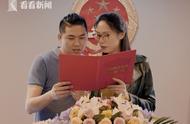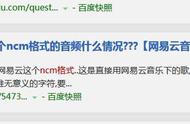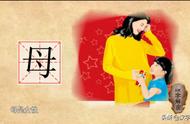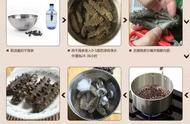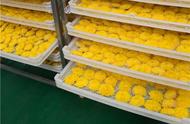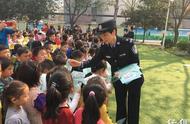一、 概念和用法:过去进行时。
表示过去在某一时间段或某一段时间内正在发生或进行的动作或状态。其形式为 “主语 was /were 动词的现在分词”。常与表示过去的时间状语连用,如:at this time yesterday,at that time,at 时间点 yesterday/last night, at that moment,then ,this morning,the whole morning,all day,yesterday,from nine to ten last evening,when,while引导的时间状语从句等。
等;或者与when,while,as引导的过去时间状语连用。在英语时态中,“时“指动作发生的时间点或时间段,”态“指动作的样子和状态。
例如:
He was reading in the library when the rainstorm came.
I was learning English in recent years.
二、 过去进行时可以表示在过去某个时间点发生的事情。
如:What was she doing at nine o‘clock yesterday?
When I saw him he was decorating his room.
三、 在含有when和while引导的时间状语从句中,如果主要动作和背景动作都是延续的或同时发生的,那么主从句的动词都可用过去进行时。
例如:
My father was reading newspaper while my mother was making dinner.
He was cleaning his car while I was cooking.
结构组成
1. 过去进行时由“主语 was/were doing”构成
eg: We were having supper when the phone rang. 我们正在吃晚饭时电话响了。
2. 过去进行时的否定式由“主语 was/were not doing”构成
eg: This time yesterday Jack was not watching TV.昨天这个时候,杰克不是在看电视。
3. 过去进行时的疑问式由“was/were 主语 doing”组成
eg: Were you playing basketball at four yesterday afternoon? 昨天下午四点你们在打篮球吗?
时间状语
现在分词
1. 在动词原形后直接加-ing
look-looking cook-cooking read-reading
2. 以不发音字母e结尾的动词 ,去掉e再加-ing
write-writing live-living dance-dancing
3. 以重读闭音节结尾且末尾只有一个辅音字母的动词,双写该辅音字母后再加-ing
begin-beginning swim-swimming sit-sitting put-putting
4. 少数几个以ie结尾的动词,要变ie为y,再加-ing
tie-tying die-dying lie-lying
基本用法
1、过去进行时的基本用法主要表示过去某一时间正在进行的动作。
例:He fell asleep when he was reading. 他看书时睡着了。
2. 用过去进行时表示现在主要是为了使语气委婉、客气。
例:I was wondering if you can give me a lift. 我不知你能否让我搭一下车。
3.动词be的过去进行时也可表示过去一时的表现或暂时的状态。
比较:He was friendly. 他很友好。(过去长期如此)
He was being friendly. 他当时显得很友好。(指当时一时的表现)
过去进行时与一般过去时的区别
1.都强调过去发生的事
过去进行时强调过程,不一定完成
We were eating dinner in the kitcken .(强调正在吃饭,不一定吃完)
一般过去时强调事件,一定完成
We had dinner last night.(昨天吃的晚饭,一定吃完了)
例如:表示一个动作正在进行时,另一个动作发生了,第一个动作用过去进行时,第二个动作用一般过去时。
While John was playing the pinao,Lisa left home.
或者说:过去的一个动作发生时,另一个动作正在进行,如果两动作一样长,则都用过去进行时。如果一个长一个短,则较长的用过去进行时。
例:He played when I was studying.
2.过去进行时与一般过去时,两者都表示过去发生的动作,但过去进行时表示在过去某一特定的时间点或时间段正在进行的动作,而一般过去时表示在过去时间完成的动作。例如:
例:I was typing a letter last night. 昨晚我在打一封信.(可能没打完)
I typed some letters last night. 我昨晚打了一些信.(已经打完)
1、一般过去时往往表示某一动作已经完成,而过去进行时却表示动作在持续或未完成。(延续性动词)
例:She wrote a letter to her friend last night.(信写完了)
She was writing a letter to her friend last night.(信不一定写完)
2、一般过去时表示只做一次动作,而过去进行时却表示动作反复地进行。(短暂性动词)
例:She waved to me. 她朝我挥了挥手。
When和while的区别
两者的区别如下:
①when既指时间点,也可指一段时间;
while只指一段时间,因此when引导的时间状语从句中的动词可以是终止性动词,也可以是延续性动词,而while从句中的动词必须是延续性动词。
②when 说明从句的动作和主句的动作可以是同时,也可以是先后发生;while 则强调主句的动作在从句动作的发生的过程中或主从句两个动作同时发生。
③由when引导的时间状语从句,主句用过去进行时,从句应用一般过去时;如果从句和主句的动作同时发生,两句都用过去进行时的时候,多用while引导,如:
a. When the teacher came in,we were talking.
当此句改变主从句的位置时,则为:
While we were talking,the teacher came in.
b They were singing while we were dancing.
④when和while 还可作并列连词。when表示“在那时”;while表示“而,却”,表对照关系。如:
a. The children were running to move the bag of rice when they heard the sound of a motor bike.
孩子们正要跑过去搬开那袋米,这时他们听到了摩托车的声音。
b. He is strong while his brother is weak.
他长得很结实,而他弟弟却很瘦弱。











